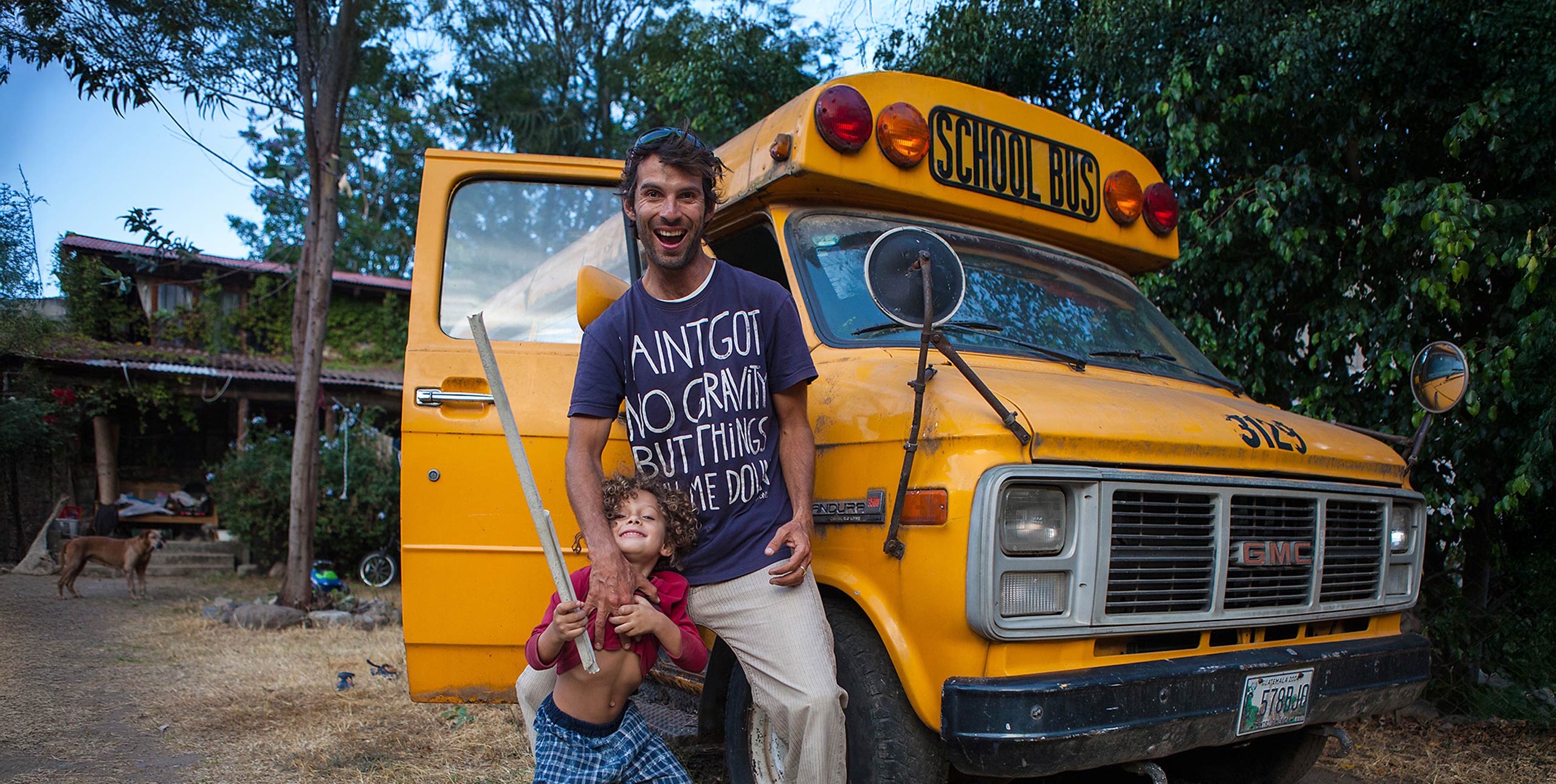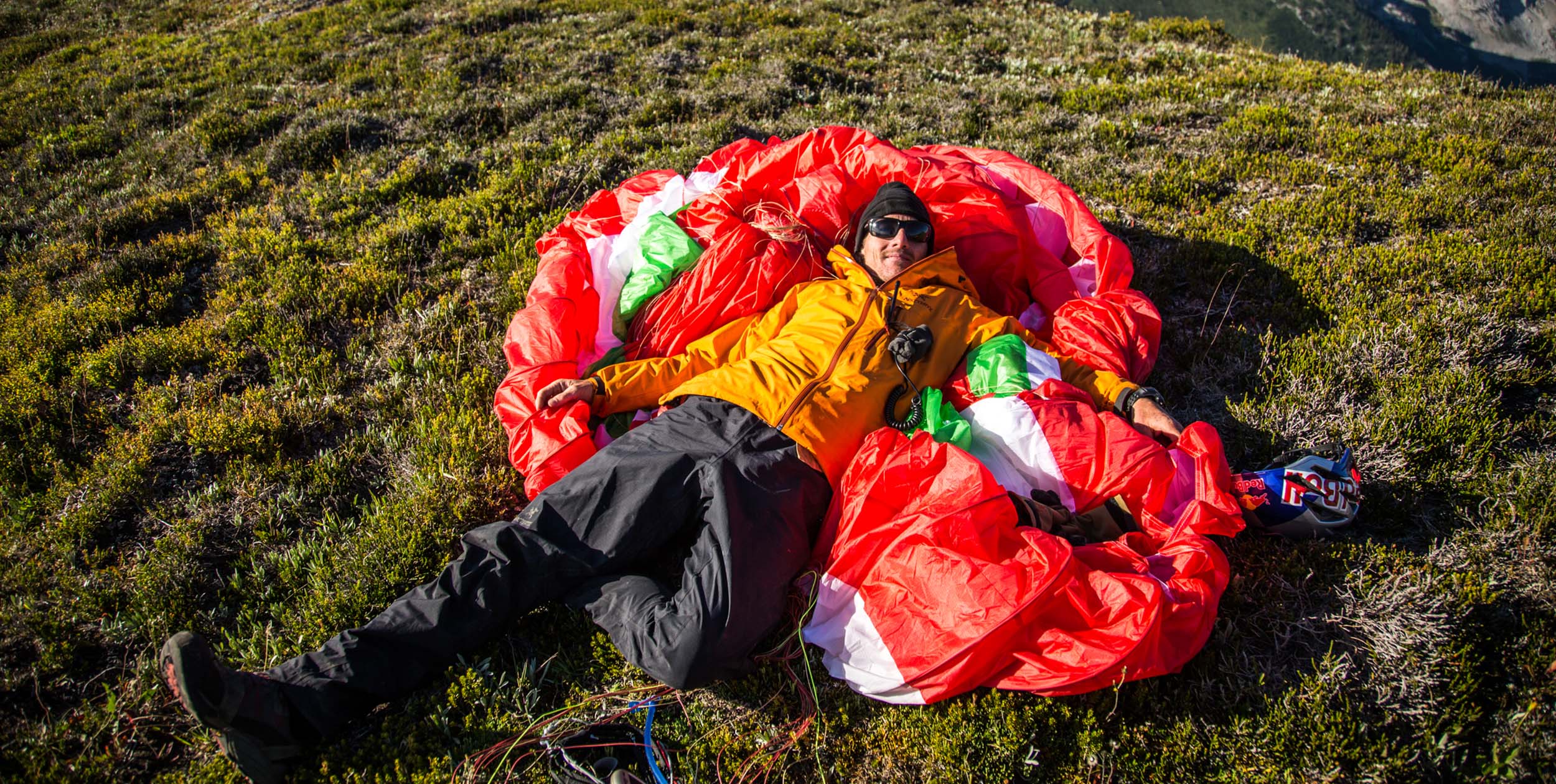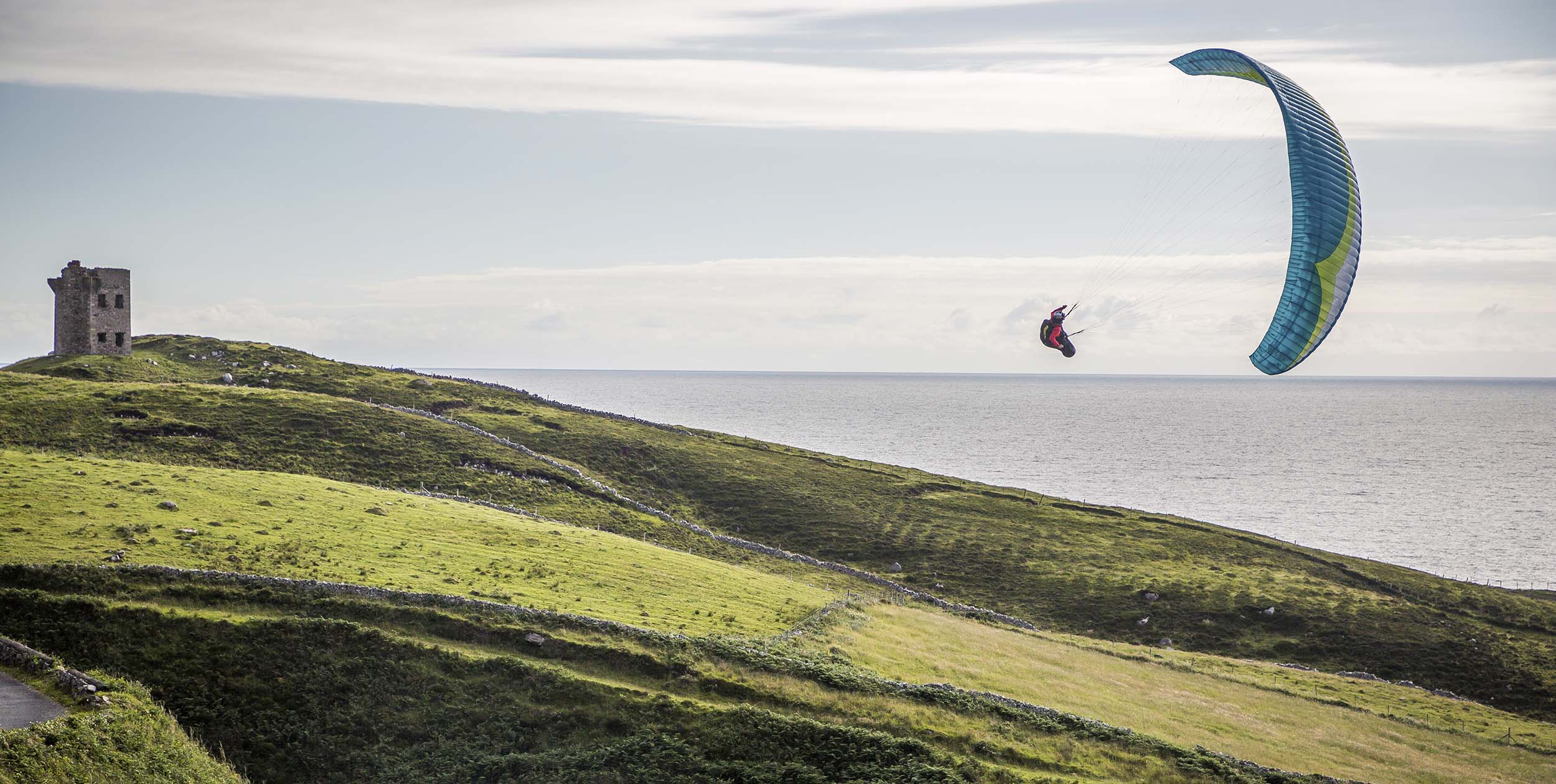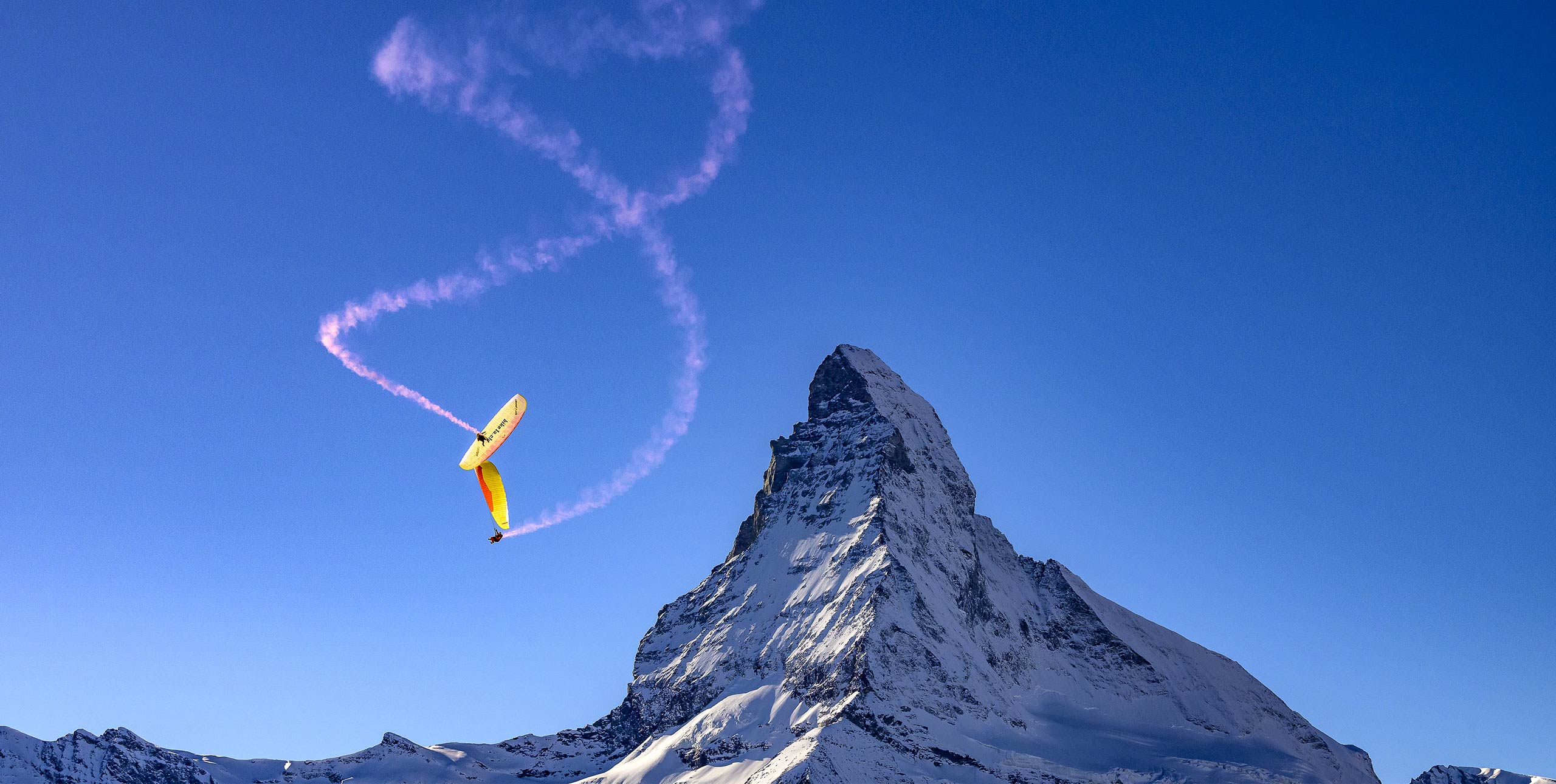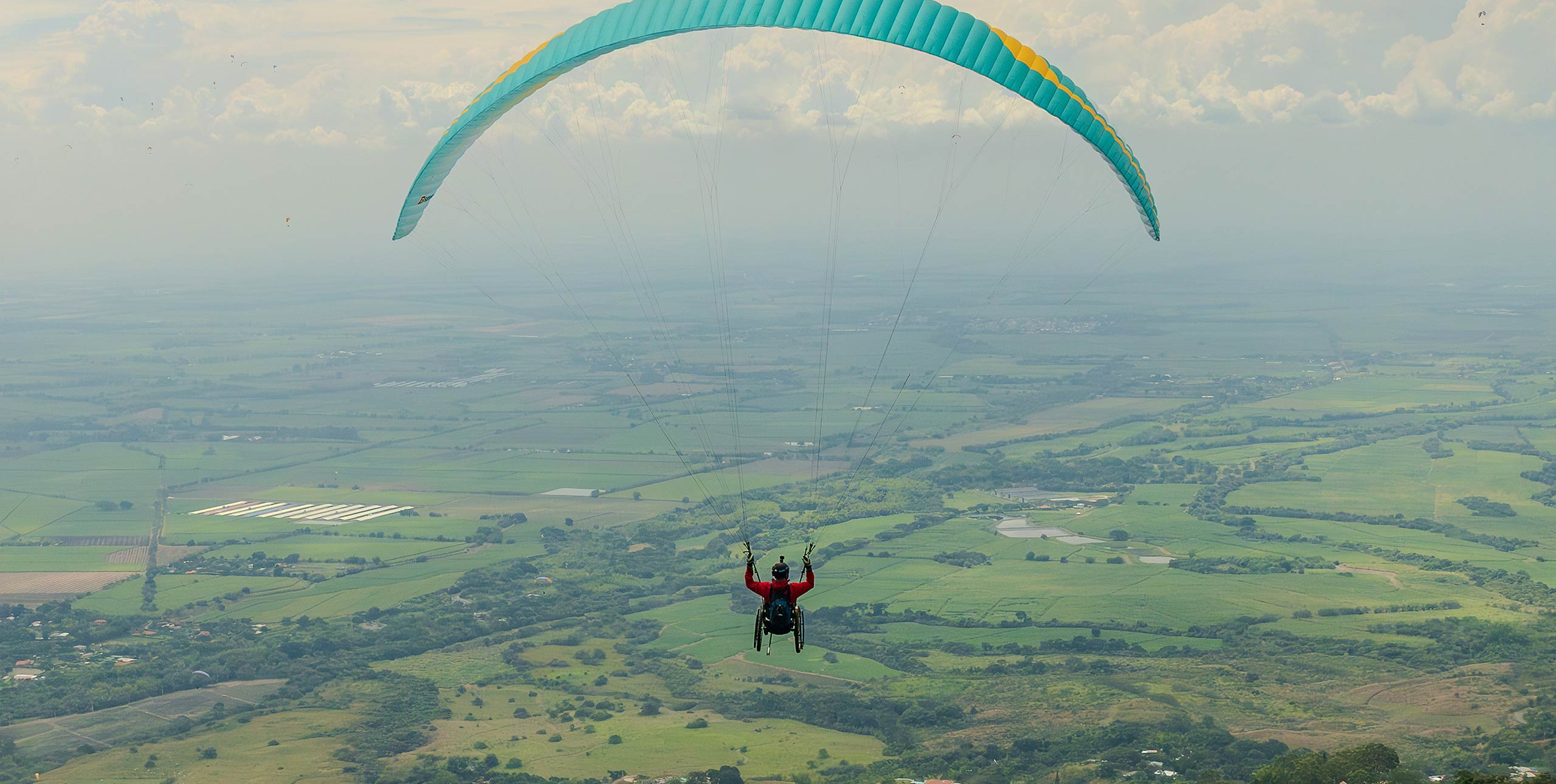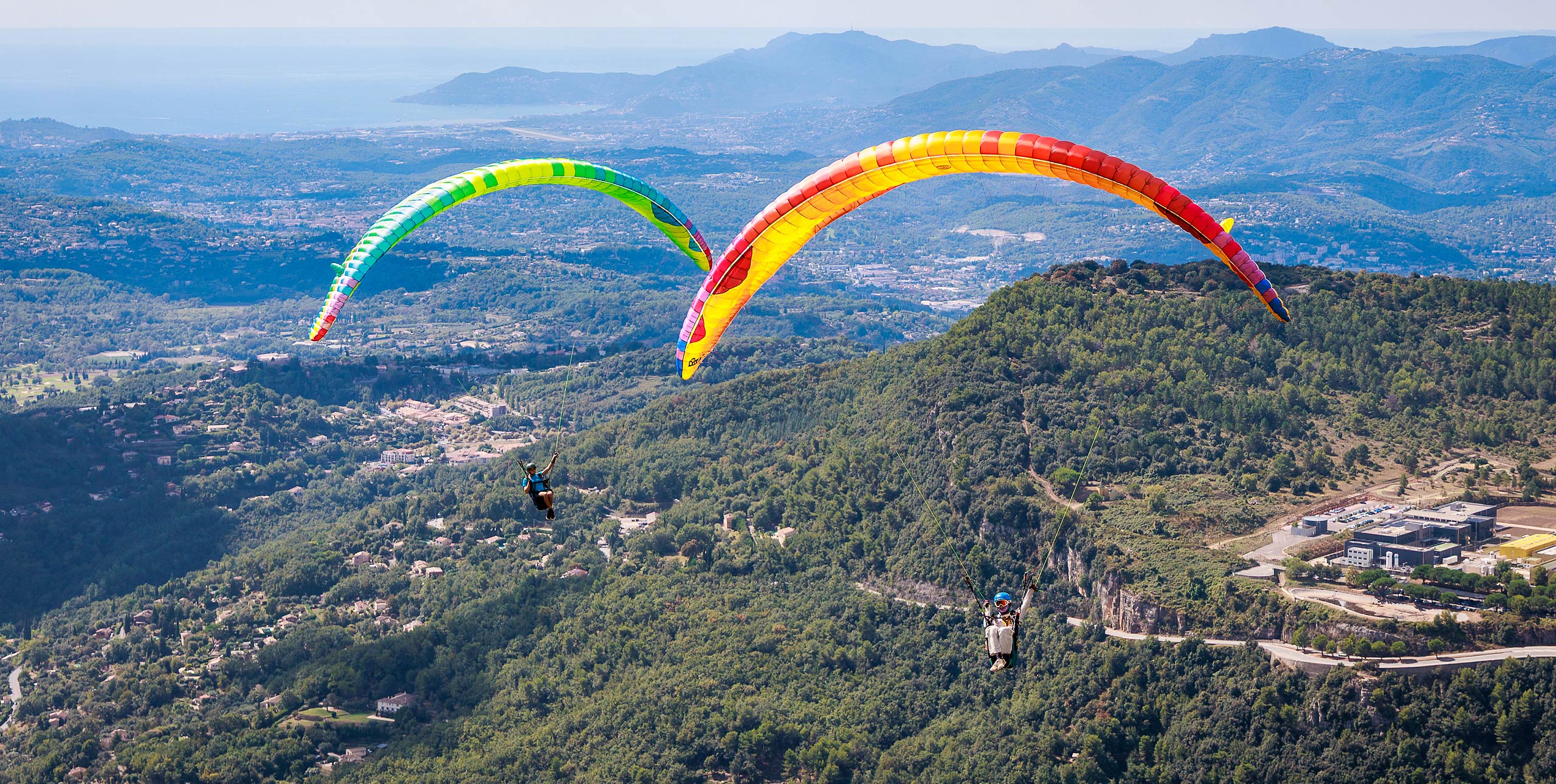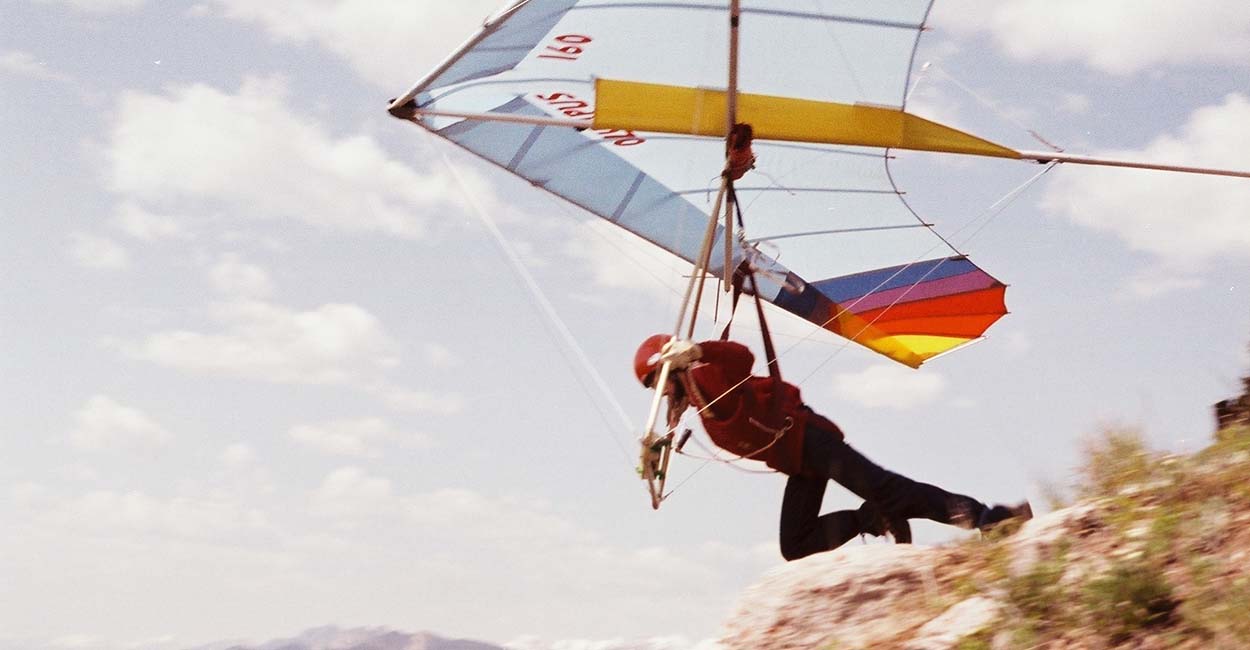
‘How can you ever think you have the strength to get through a life-limiting injury?’ A paragliding accident changed Stewart Midwinter’s life forever – but not the person he is. Hugh Miller reconnects with an old friend
Stewart Midwinter is a highly accomplished paraglider, hang glider, sailplane and light aircraft pilot. One of the pioneers of the Canadian scene, Stewart has also been a respected CIVL competition judge and committee member for many of his 40 years in free flying.
In 2011, Stewart had a flying accident that concluded with neck-down paralysis: a living nightmare, in his own words.
His story doesn’t make for a usual paragliding magazine article, particularly in a magazine that aims to inspire. But Stewart continues to very much live as a pilot, as a member of our community. Just last summer he contributed to Dave Turner and Gavin McClurg’s Alaska expedition efforts, tasked with sending them daily weather updates.
Through my own 25 years in flying, I’m mindful of how many pilots I’ve heard about who’ve suffered life changing injuries, and whose stories get cut short. It’s as if they fade to the edges of our consciousness as we keep on keeping on.
A lot of what follows doesn’t make for easy reading. But Stewart’s experience is a pilot’s life, and if we are to honour his experience as a fellow pilot, then his story should be told just like anyone else’s.
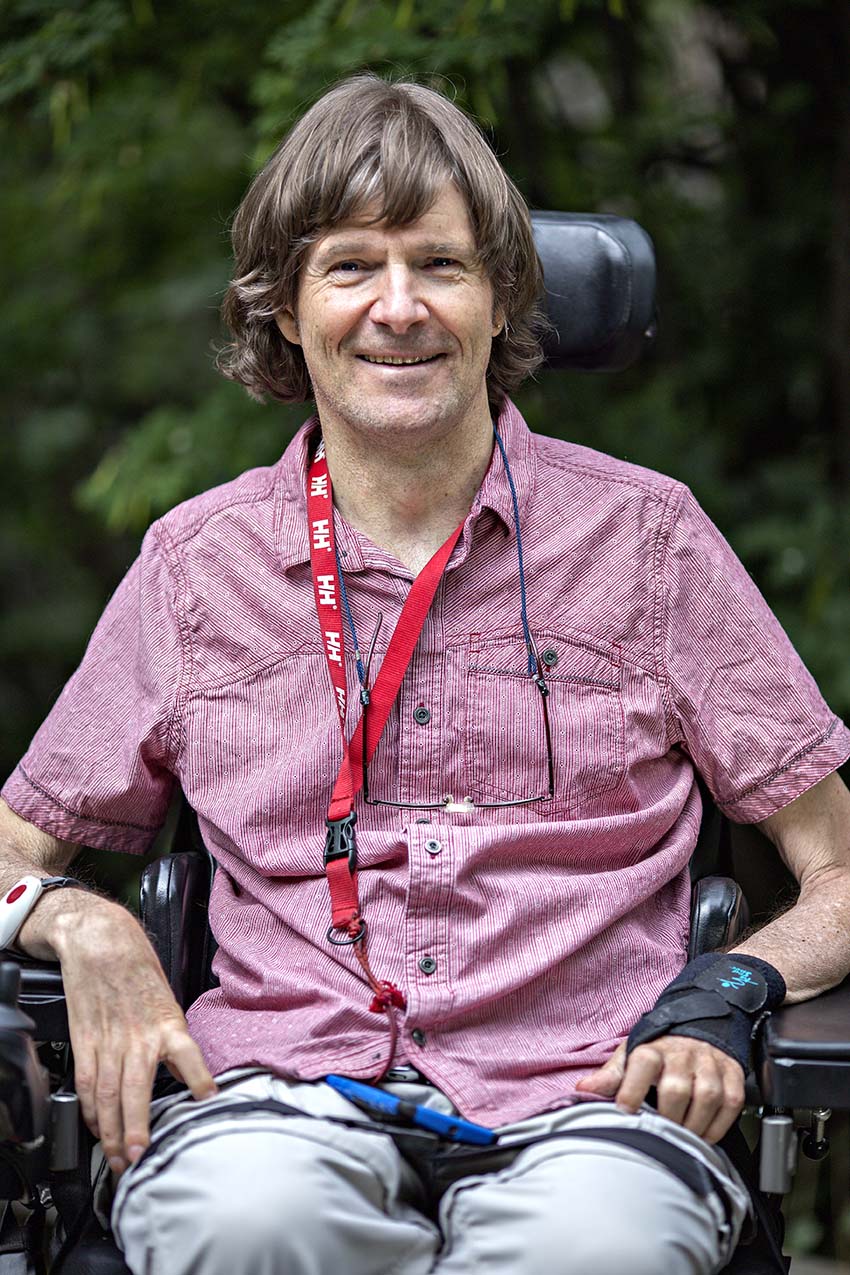
I first met Stewart in Castejón de Sos in 1997. It was my first World Championships, a competition held in the harsh, mid-summer heat of the Spanish Pyrenees, dominated by the sight of reserves being tossed over jagged peaks. No official record was kept but at least 15% of the field either threw their chute or were injured during the contest. Stewart was working for CIVL as a judge at the time.
“That’s right,” Stewart recalls. “It was a tumultuous week in many ways. I met this woman and I had an affair with her. It ended my marriage and completely changed my life and I don’t regret a moment of it. That distraction helped me get through the ugliness of the record number of protests the jury had to deal with.
“In terms of competition paragliding safety, I think we’ve since come a long way. We just haven’t had that level of carnage since. Pilots are now way better trained, and wings are more solid.”
Now aged 61, Stewart lives in Calgary, Canada, in a small community for people with life-altering conditions. He fell for the Rockies when a university student. “As soon as you see the Rockies you just think ‘I’ve got to be there’ – especially as a hang glider pilot”, he says. “I remember the exact date I first flew: 23 October 1974.”
“It feels like a lifetime ago. And when you look back at photos of those gliders, I’m like, ‘man, really?’ They were just so horrible to fly. When the double-surface UP Comet came in at 1981 that was it, that was the watershed moment.”
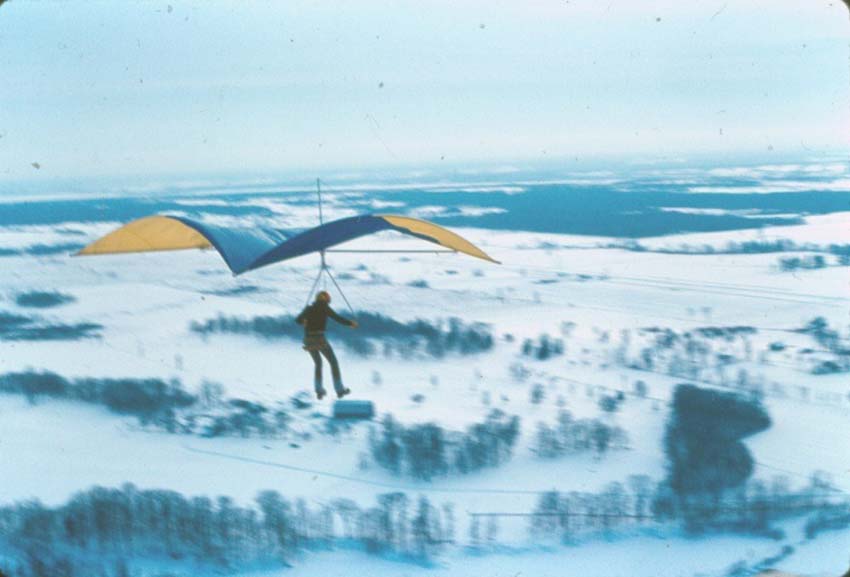
“I started paragliding in 1987. My first wing was a modified freefall parachute. All the lines were like three milimetre thick nylon lines like you see on reserves. It had a glide of about 2.5 to 1. We ran off the hill, and kept running – we could barely get to the bottom, but after two flights I thought ‘this is the future of aviation’.”
Stewart continued to fly hang gliders too, and was one of the first to fly the Class 5 Swift. He went on to set five FAI world records. However, soon after returning from Castejón de Sos, and with his marriage in tatters, he found himself in a flat spin crashing into Mount Swansea, and was lucky to walk away without a scratch.
“If your personal life is in turmoil you really shouldn’t be flying,” Stewart says. “That’s what I believe now. When you get into a crisis in the air and it’s sort of do-or-die situation you have to react instinctively. If you’ve just got fired, you’re stressed, you just got divorced, or your mother died… your brain won’t be alert or functioning well enough.
“If you spin a sailplane at low altitude you’re dead, so really, I was lucky to survive. I wrote an article for Cross Country titled ‘An interview with a Dead Man’. I talked about that idea with Michael Robertson, a long time instructor in Canada, since Michael had come up with his ‘Robertson chart of reliability.’ Basically you should do a proper self-assessment before you fly, including all personal factors.”
Stewart would go on to enjoy another 14 years of incident-free flying before he suffered his life-changing accident on the 13 August 2011. But like his accident of 1997, things were on his mind in the hours leading up to his crash, and he believes this contributed to what happened.
“I’d started dating this woman – now my fiancée – about three months earlier, and on 11 August she rang me to invite me to a family barbecue at her ex’s house. It just felt a little strange, you know, I mean nothing that weird – they’d been split up 20 years, but it just knocked me a bit.
“Also, the day before I got hit by an unexpected garage bill, and as I was pulling out from the garage I see flashing lights from a police car. I get pulled over and get told I don’t have a current license plate sticker and got handed a stiff fine. Things were bothering me a little, I guess.”
Will Gadd had posted an invite for a hike-and-fly at Canmore the following day, and Stewart decided to take him up on it, packing his 18-metre mini wing for the trip. He’d flown his mini wing for over a year, with several flights to cloudbase, and loved it, but remembers that even a mild day could feel like really big air.
“You know Will, right? This guy is an uber athlete. I figured the only way I’d keep up with him is by taking my light gear, my mini wing, despite the fact I knew I’d be taking off into pretty big air in the middle of the day later on.”
Stewart set off with Will, but Will was on a mission: “I don’t think he can walk slowly enough to stay at my pace!” joked Stewart. Stewart soon felt burnt-out trying to keep up, ran out of water and food and told Will to go on ahead. By the time he got to take-off Will was inflating and off, so Stewart was alone on the mountain.
“I was late, and I thought, ‘I gotta get in the air, gotta get in the air, he’s getting away’ and I didn’t really think about the conditions. I mean, it was light wind, but I didn’t have much of a plan,” he remembers.
Thirty seconds after take-off, Stewart took a big asymmetric collapse.
“For whatever reason I didn’t look up,” he remembers. “I corrected, then over-corrected – the wing was so loaded and so responsive. My muscles were hard-wired to dealing with the docile Nova Mentor 2 I normally flew. It got worse. I looked down, saw the rocky mountainside and thought, oh crap. That’s the last I remember, but I probably pulled brakes to slow my descent and might have stalled the wing.”
Stewart landed on his head, dislocating his C4 in the spine in his neck by ten millimetres. A thousand feet overhead, Will remembered hearing him bounce and concluded that no-one could possibly have survived such an impact, but spiralled down to assist.
“I was face down on the slope, my wing caught in some trees,” recalls Stewart.
“I couldn’t get up, right? … This is pretty hard to talk about.”
“I could barely lift my head. I thought, ‘I can’t feel my left arm, why’s that, maybe it’s broken?’ I took a look, to my left, and my arm looked ok. Then I thought, ‘Why can’t I move my legs? They must be jammed in the dirt, that’s why.’
“A part of your mind cannot accept the reality, which is paralysis. Although another part knows exactly what’s going on.”
“I lay there, and people ran down the mountain to help me. One of them was a nurse, she knew what to do, stayed with me, gave me sips of water. About three hours later the Banff parks rescue helicopter showed up. The hospital was right below in the valley. As they long-lined me off the mountain, I still had the presence of mind to think, ‘hey I’m having a longer flight now than I did with my paraglider’.”
Q&A
HM: What has happened to you, there’s no denying it’s something that could happen to any single one of us who flies. And there’s an aspect of this I’m interested in. The fact is, we as a magazine naturally mainly focus on pilots doing great things, flying far, enjoying competitions. We don’t hear about pilots who get hurt and can’t fly anymore… they kind of get swept to the sidelines. It’s like an unconscious, ‘yep, we don’t want to know about that.’ But those pilots’ experiences are a very real part of the sport and a fabric of the sport. And many, including you, feel, and are, in your very core identities, pilots until you die. It’s in your blood. So I’m interested in bringing it more to life, that diversity of experiences we share.
SM: I thought, “Wait a minute, this is not my life story. I’m a pilot. I’m an experienced pilot and I’m going to be flying when I’m 70. Flying is my life. No, no no. This is a mix up. This is not my story. Wait a minute, I want my money back.”
“Too bad, you made a mistake,” comes the reply from the other side of my mind.
Buddhists would say ‘ok, let go of the story’. We’re not following a script through life. You just need to be present and aware of everything. Well, that’s easier said than done.
And yes, that point you make about not hearing about the stories of those who have accidents is really valid.
I went to the Bannf Mountain Film Festival last year to watch Will [Gadd] and Gavin McClurg speak about their Rockies trip. You go through the foyer where there’s all these people wearing their Patagonia jackets, looking healthy, talking about their latest exploits, and here you are in a wheelchair. Firstly you’re shorter than everyone, so they’re tripping over you in a crowded hallway. They either don’t see you, or they see you too much. You’re either invisible or you’re a spectacle. I went with a friend who’s also in a wheelchair. After it was over, she told me she’d wanted to scream out, “Hey you know, I’m not just some CRIPPLE. I’m one of YOU guys. I’m a part of this tribe!” And nobody sees it.
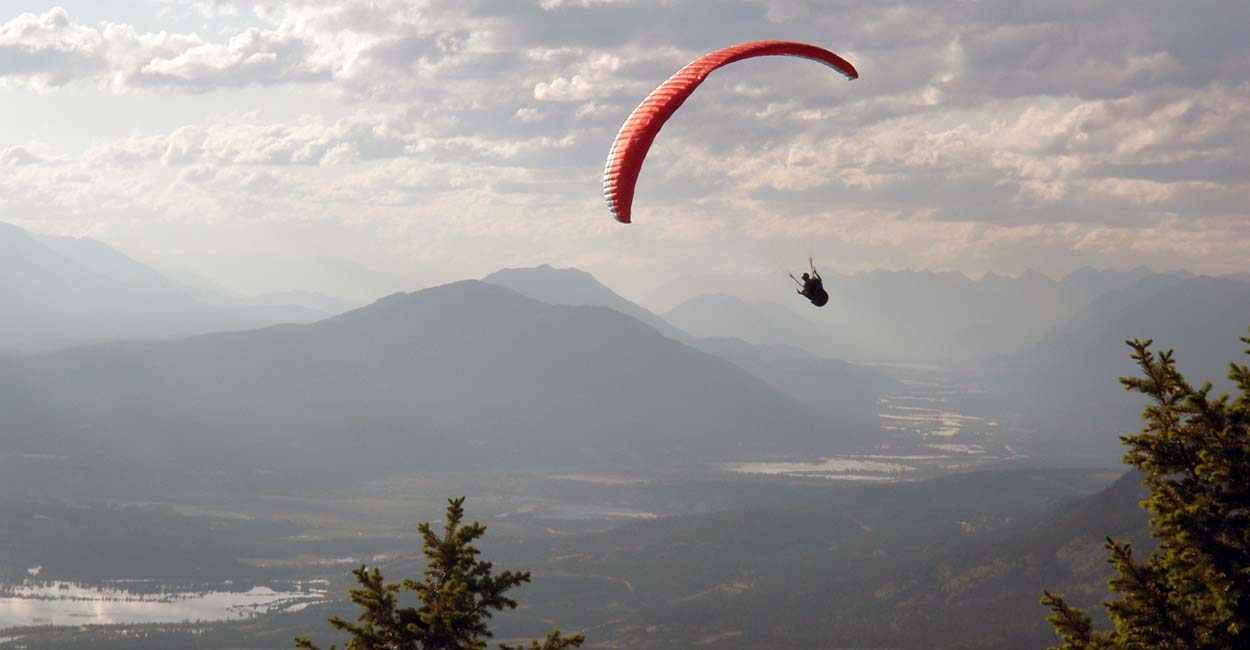
HM: When I was 20, a friend of mine had a flying accident and was paralysed and I didn’t know what to say. I’d like to think now I’m older it’s OK, I don’t have that awkwardness, but I think I probably still do.
SM: We don’t know how to deal with suffering and other peoples’ suffering. A lot of my friends never came to see me in the hospital. Or they came once, had tears in their eyes, and never came back. There were precious few that came twice, and I can count on the fingers of one hand the number that still visit me. People don’t know what to talk to you about. Maybe they feel, “Jeez I can’t talk to him about flying cos I’m going to make him feel bad.”
I guess people are second-guessing, trying not to upset you… but that doesn’t do anyone any good I guess. Yes, they feel they can’t talk about the great flight they did two weeks ago so they don’t come by, and I think that’s sad. As you say, I’m still the same guy, I’m still fascinated by flight. I’ve been up in a glider a number of times since the accident, I’ve had some stunning flights, but obviously I’m just a passenger. It’s a little unreal from that perspective.
My suggestion would be: get past whatever barriers you’re putting up and talk to people about your passions, share them so they can live them vicariously.
This guy, a quadriplegic, wrote some advice recently. He said, instead of saying “I’m so sorry for what happened”, or “I’m so sorry for your loss”, instead of sweeping away the pain and the horror, acknowledge it in some way.
Say instead, “You know, this must be terrible for you at times, but I’m here for you, if there’s anything I can do to help, let me know”. Don’t sweep it away. It’s part of the human condition. Recognise we are doing something that’s risky, but at the same time most spinal cord injuries happen from road traffic accidents, or getting smacked by an ocean wave into the sand… you’re not doing anything wrong by flying! We just don’t want to realise how ephemeral our continued good health is.
The mountaineering community really understands the nature of risk much better than the flying community. It’s more obvious. With high level climbing that risk is with you every moment – you can be killed by objective hazards like rock falls or avalanches. Shit happens.
Will Gadd made the point that when one of his climbing friends gets killed, you get together, have a memorial, share pictures and memories, and sooner or later you move on, and you get on with your sport. But with me, well, I didn’t die. And I’m still here in peoples’ faces so they can’t really avoid having to deal with the reality of what our sport can imply. A lot of people can’t deal with that.
I backed off and started just flying EN B’s a long time ago. I didn’t really comprehend that a mini wing could turn into a D, or worse, if it collapses. I think we have a duty to each other to point out if we think our friends are taking undue risks. And it’s hard to tell people in a polite way, without often getting a rude response – “Who are you to tell me I don’t have the skill to fly this wing?” – that kind of thing.
I remember Robbie Whittall standing up at a European Championships and saying, “Most of you pilots are not up to flying the comp wings you’re on”. That went down like a lead balloon, but he was right.
Not that I was over my head when I had my accident. My problem was I wasn’t present: I was too distracted. That’s the thing about mindfulness – when you’re not mindful, you’re not mindful enough to tell that you’re not mindful.
HM: You’re very right.
SM: I wasn’t on my game and I didn’t know I wasn’t on my game. Maybe Will might have picked up on that and told me, and I suggested that to him and for a while he avoided me, but hey, at the end of the day I’m responsible for my actions. Of course it’s not Will’s fault.
HM: But I guess what you’re saying is: take this seriously, look out for each other.
SM: Yeah, it seems too simple, but because flying is such an individual sport, a lot of people object to that. We currently have a hang glider pilot in Golden flying a 30 year old hang glider. The cloth is like silk. He’s got duct tape up and down the leading edge. His harness is stitched together. And a lot of people have told him it’s only a matter of time before it falls to pieces. Then others say, “No, who are you to tell him what to do? We’re all pilots taking our own responsibility.”
But the day he dies, others will say, “yeah why didn’t anybody stop him? But in our sport and the sport of climbing we encourage risk taking. We reward Alex Honnold for climbing solo up these insane walls and Nevil Hulett for breaking 500km flying in incredibly strong winds. And what happens when you get injured trying one of these bold moves? Well, the accolades fade away.
But you know, I remember a local pilot who crashed in 1984, became a paraplegic. I didn’t know what to say, I didn’t visit him, I couldn’t deal with it, couldn’t bear it.
HM: It’s a really difficult topic. These are very uncomfortable truths.
SM: The first six months of my injury, I remember thinking, “I can’t even commit suicide, I can’t even hold a gun because I don’t have any hand function. How can anyone live like this?” I was on anti-depressants and sleeping pills, and it was very, very hard.
I was a really active guy, riding my bike to work, running at lunch time, skiing, rock climbing, sea kayaking. And suddenly it was like being in a psychiatric hospital strapped to your bed. Every night it was the same nightmare. I’m at a picnic on a warm, sunny day and I lay down on the grass under this tree for a nap, and when I wake up I go to stand up and my legs won’t move. I try again, my legs won’t move… and I start screaming, and that’s when I wake up and the nightmare is reality, but reality is worse because in the dream I can sit up.
I had so many times of just breaking down uncontrollably, and after six months or so I just thought “Stewart, you’re losing it here, you have to try and get a grip”. Grief isn’t linear, it just keeps coming back and hitting you when you least expect it.
Everybody says, “you’re so strong”, or “you’re such an inspiration”. I really loathe that word now. I’m an inspiration for simply waking up today? Or they say, “its so good to see you out.” Like I conquered some record by getting out of the door. I don’t want to be special, I just want to get on with my day the same as everybody else, and be treated the same as everybody else.
HM: Being called an inspiration – I guess that’s a hard package to receive, to sign for.
SM: Psychologically, the way I try to deal with things is to think I did die, and now I’m this reborn Stewart. That’s what my yoga teacher told me. “Pretend every day you’ve got a new body and don’t have any expectations. See what you can do.” It’s not easy. And the adventures are so much smaller nowadays, but they’re still adventures. My fiancé and I will go out down the river, see the ducks, go out to see the hills. Guess what, I’m still a risk taker, and just getting on the bus on my own and going into town is a proper adventure.
When you get this injured, it’s easy to feel totally useless. The thing that helps me immensely is when pilots recognise I have something to contribute from all my years. Each year I give a briefing on flying Golden at the Willi Muller competition, and I watch the Spot trackers, keeping an eye on things.
I also did the met updates for Gavin and Dave’s traverse of the Alaska Range. Holy crap, now that was a responsibility! A great honour but also a great responsibility. But I really am touched that they valued my input. In the US they have Jeff Huey, who’s a former team pilot and now a paraplegic. He’s a meet director at many of the US comps, including the Rat Race and the US Nationals. He’s fully involved, as he should be with all his experience.
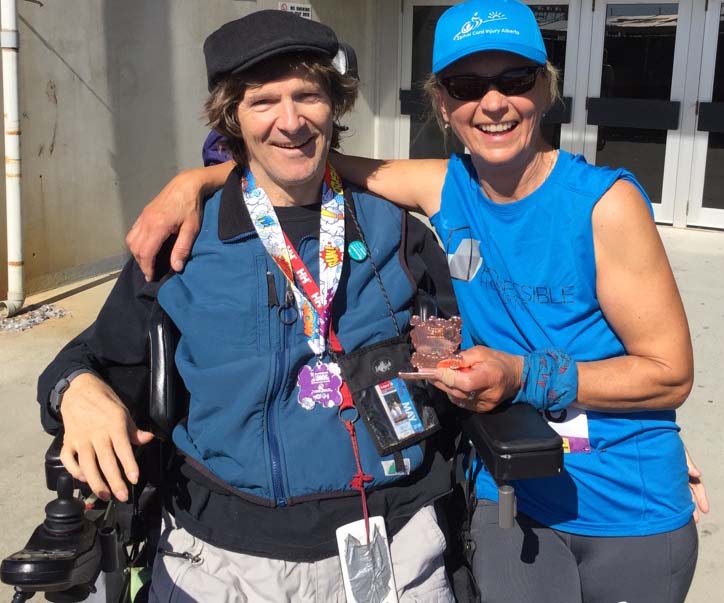
HM: Earlier on, you identified some of the factors you believe contributed to your accident. Do you think there’s a general malaise of not taking risk seriously enough in free flying?
SM: Maybe. Speaking personally, I’ve never taken an SIV course and in retrospect that seems like a huge mistake. Twice in my life I’ve been in a panic situation and not done the right thing. And if I’m really honest, and face up to the truth of it, that means that my flying career has always had this Achilles heel… I’ve never been properly prepared to react in the right way. Even if you’re a calm air pilot, do an SIV course. You need to know how to recover from situations. And if you can’t cope with that you shouldn’t be in the sport.
Astronauts look at every single possible thing that could go wrong, and they ask, “How is this space ship going to try and kill me today?” And they practise dealing with that, repeatedly, in simulations, and find their weaknesses, and work on them. We need some of that discipline in free flying. You know, it’s really hard for me to be a cautionary tale for other people. Maybe all the bad luck got channelled through me, and now very few pilots fly mini wings in strong conditions in Canada, at least. But maybe that’s a way of rationalising it.
HM: Stewart, as we wrap up I’ve been struck by your honesty in talking so openly about what you’ve been through. I’m also taken by the straightforwardness of your appeal to fellow pilots to continue to be included in the conversations about what we all love to do.
SM: One of the things I’ve learnt since my accident is this: everyone has a burden to bear. I’ve learnt to treat everyone with kindness, and take the time to talk to people. And I do now because I haven’t got a job to rush to. The other day I got chatting to an 80-year old lady at the bus shelter, a Native American. Normally I wouldn’t, I’d think “Nah, she might be asking for money, move on”, but I did and next thing I’m spending half an hour learning about her upbringing on the prairie as a child. Just wonderful. That’s joy – making connections to other people. More than anything.
Also just going out in the mountains in the car, looking at the snow-covered peaks, I think “I’m so lucky to be alive now, living here, seeing these views.” There are so many people in the world in the midst of war, with no drinking water… what have I got to complain about? It’s the very simple moments, mostly being outdoors, that bring real joy. Getting out of the house on my own, without a chaperone – that brings a lot of happiness. Connecting to nature and to the earth is one of the deepest joys you can have.
There’s a facile saying that you never know how strong you are until you have to be that strong. I’ve had a pretty easy life, I’ve never had any physical or mental health issues myself or in my family, I’ve got to do loads of sports, and I’ve had the money and time to do them. But I mean, how can you ever think you have the strength to get through a life-limiting injury? I guess it’s the ultimate competition task.
First published in Cross Country 178, April 2017


